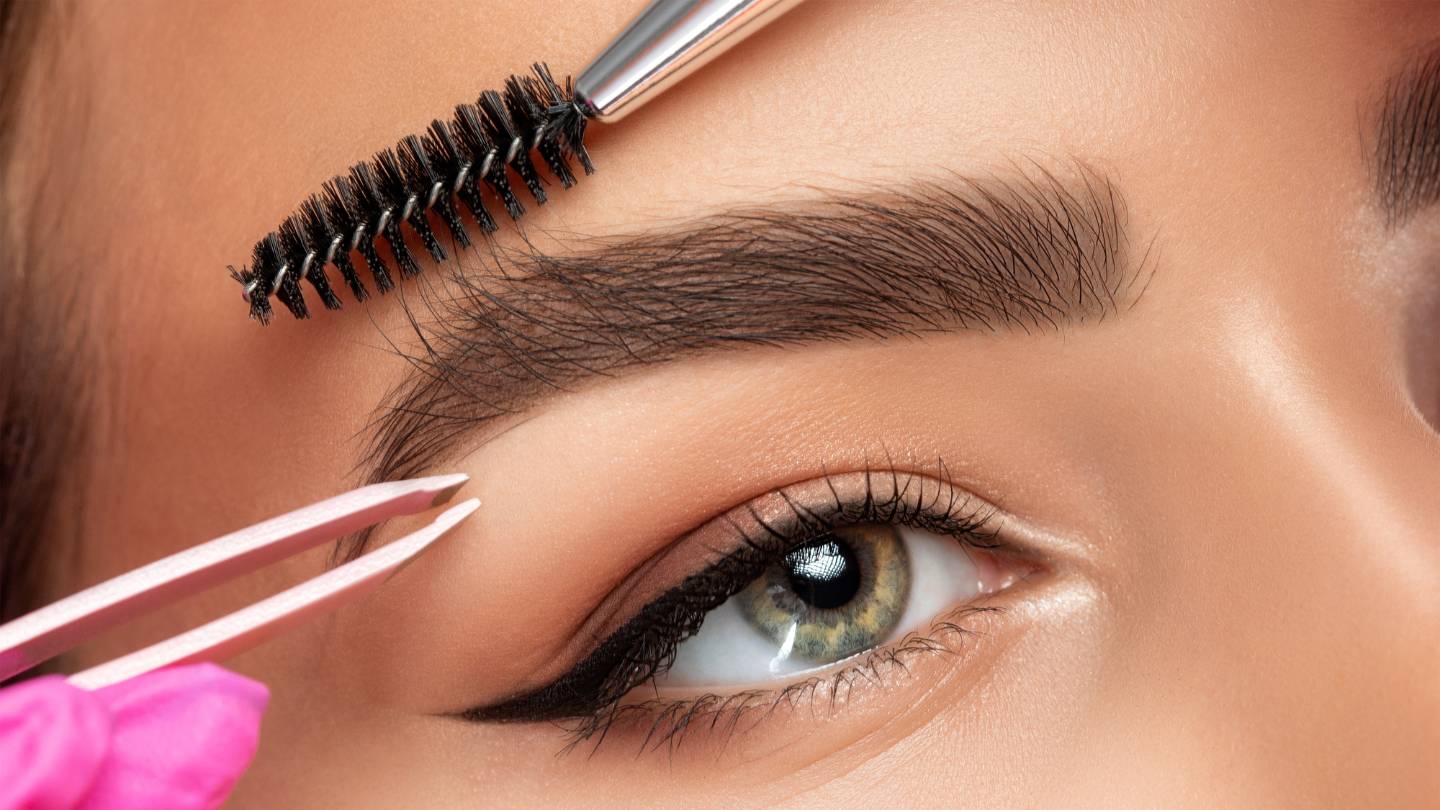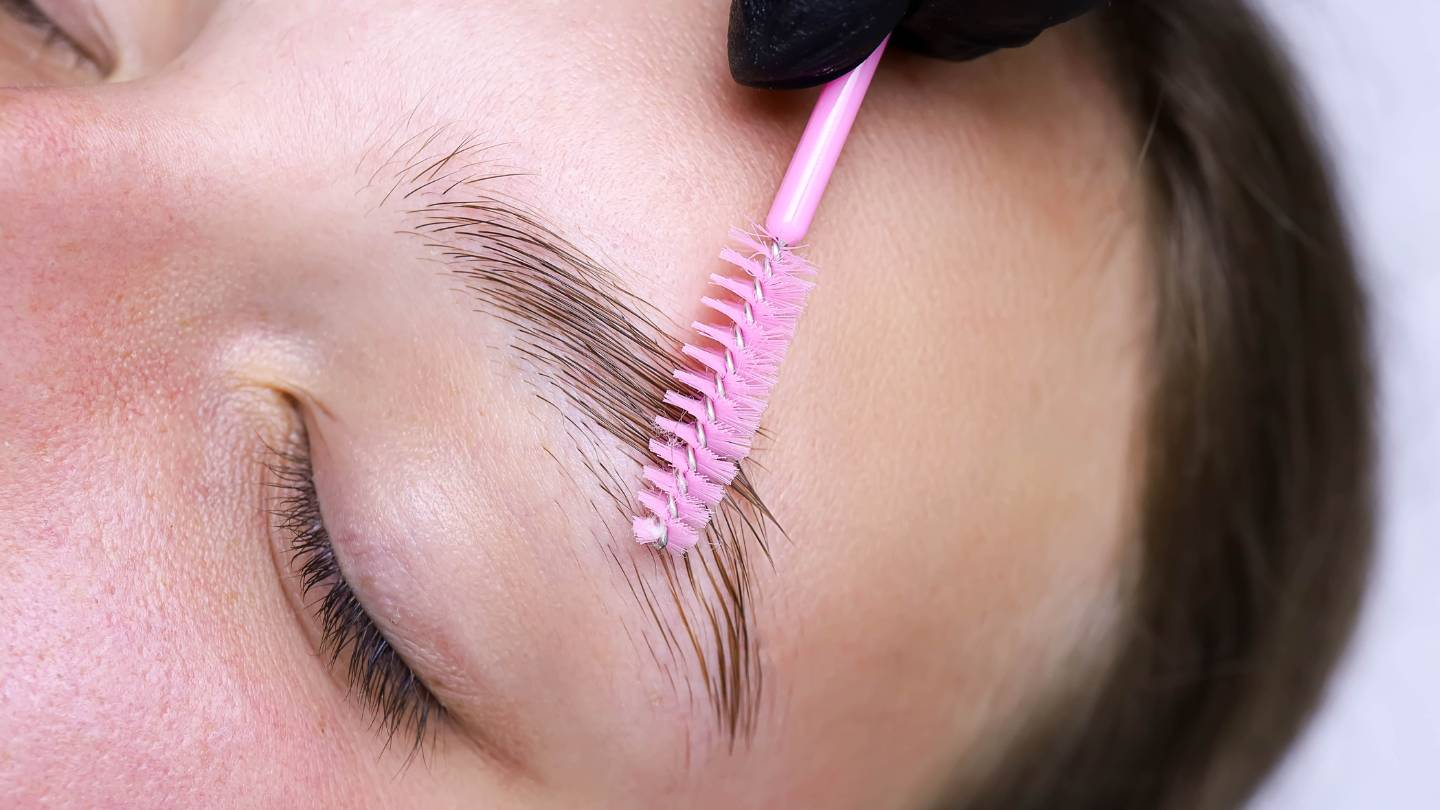Eyebrow tattoos have become a popular cosmetic enhancement, offering a low-maintenance solution for beautifully defined brows. However, proper care is essential to ensure that your tattoo remains vibrant and well-shaped.
Protecting your tattoo begins immediately after the procedure and continues as part of your daily routine. Below, we discuss the steps necessary to safeguard your eyebrow tattoo and keep it looking fresh for years.
Let’s get straight to the point
To protect your eyebrow tattoo and keep it looking fresh, follow these essential care tips: Shield your brows from sun exposure by applying sunscreen and wearing hats, as UV rays can fade the pigment. Keep your brows dry, especially during the healing process, and avoid harsh skincare products that can irritate the tattoo.
Don’t rub or scratch the area, even if it itches. Refrain from using makeup on fresh tattoos, sleep on your back to avoid pressure, and minimise sweating. Lastly, schedule regular touch-ups to maintain the vibrancy of your tattoo over time. Proper care ensures long-lasting, well-defined brows.
Protect Your Eyebrows From The Sun
Why Sun Exposure Fades Your Tattoo
The sun’s UV rays are one of the biggest enemies of any tattoo, including eyebrow tattoos. UV rays break down the pigment in your tattoo, causing it to fade and lose its vibrancy over time.
Even short periods of sun exposure can weaken the colour, especially when the tattoo is still healing. Protecting your brows from the sun is one of the most important steps in preserving their appearance.
- Always apply sunscreen to your eyebrows, even if it’s cloudy or you’re indoors by a window. A sunscreen with at least SPF 30 is recommended for maximum protection.
- Wear a wide-brimmed hat or cap to provide extra shade for your face when you’re outside.
- Avoid direct sunlight during peak hours (10 AM to 4 PM), as this is when UV rays are the strongest.
Taking these precautions ensures your tattoo maintains its shape and colour for longer, as prolonged sun exposure can quickly degrade the pigment, leaving your brows looking dull.
Keep Your Eyebrows Dry
Water, particularly chlorinated or saltwater, can weaken the healing process and cause your tattoo pigment to fade. When your tattoo is fresh, it’s essential to avoid getting it wet.
Waterlogged skin can soften, causing the ink to break down and scab more severely, which can also lead to infection.
- Avoid swimming in pools, oceans, or lakes for at least two weeks after getting your tattoo.
- Be careful in the shower—use a gentle cloth to wash your face without getting the eyebrow area wet.
- Stay out of saunas and steam rooms. The heat and moisture can cause excess sweating, which also negatively affects your tattoo.
Once your brows have fully healed, you can resume swimming and other water activities, but always remember to protect your tattoo with water-resistant sunscreen to prevent fading from chlorine or salt.
Use Gentle Skincare Products
Many skincare products contain ingredients that are too harsh for a fresh tattoo. Products with retinoids, exfoliants, or alcohol can cause the pigment to fade and irritate the skin.
It’s essential to read product labels carefully and avoid any that might strip or degrade the tattoo.
- Use a fragrance-free, gentle cleanser around your eyebrows to avoid irritation.
- Avoid using peels, scrubs, or acids (like glycolic or salicylic acid) in the eyebrow area.
- After your brows have healed, you can gradually reintroduce your usual skincare routine, but always be careful around the tattooed area to prevent fading over time.
By sticking to a mild skincare routine, you protect your eyebrows from chemicals that could damage the pigment, helping your tattoo stay intact and sharp.
Be Gentle: Don’t Rub Or Scratch Your Brows
In the days following your eyebrow tattoo, the skin will scab and may become itchy. Rubbing or scratching can pull off scabs prematurely, which can cause scarring and uneven pigment distribution.
Scrubbing can also lift the pigment from the skin, leaving behind patchy brows.
- Use a clean, soft cloth to dab your brows if they become too itchy or irritated.
- If your brows begin to flake or scab, let them fall off naturally. Do not pick at them, as this can damage the tattoo.
- For added relief, you can apply a thin layer of the healing ointment provided by your tattoo artist. This will keep the area moisturised and reduce itching.
By resisting the urge to scratch, you protect the tattoo’s shape and ensure it heals evenly without gaps or patchy areas.
Avoid Makeup During The Healing Period
Makeup products, particularly those containing fragrances or preservatives, can irritate the sensitive skin of a fresh tattoo. Applying and removing makeup increases the risk of infection, as bacteria can be introduced to the healing area.
Even the gentlest products can interfere with the healing process, causing the pigment to fade or smear.
- Avoid applying makeup directly to the tattooed area for at least 7 to 14 days or until the skin has completely healed.
- Once your tattoo has fully healed, you can resume using makeup, but be careful not to scrub the area when removing it.
- For added protection, consider using mineral-based or fragrance-free products that are less likely to irritate your skin.
Being patient with makeup will ensure your tattoo heals properly, reducing the risk of infection and preserving the colour.
Sleep On Your Back To Protect Your Tattoo
The way you sleep can have a significant impact on the healing of your tattoo. Sleeping on your face or side can put pressure on your eyebrows, potentially smudging or distorting the pigment.
If your pillowcase is not clean, it can introduce bacteria to the fresh tattoo, increasing the risk of infection.
- For the first 5 to 7 days, try to sleep on your back to keep pressure off your brows.
- Use a clean pillowcase every night to reduce the risk of infection.
- If you have difficulty staying on your back, consider using a travel pillow to help keep your head in position while you sleep.
By sleeping on your back and keeping your environment clean, you allow your eyebrows to heal evenly and reduce the risk of damage.
Avoid Excessive Sweating
Excessive sweating can disrupt the healing process of your eyebrow tattoo, as sweat can break down the scabs prematurely and introduce bacteria to the area. Whether it’s from exercise or heat exposure, keeping your brows dry during the healing phase is essential.
- Avoid intense workouts or any activity that causes you to sweat heavily for at least two weeks after getting your tattoo.
- If you must exercise, try to keep your face dry by gently patting it with a clean towel.
- Use an antibacterial wipe on your face if necessary, but avoid touching the eyebrow area.
Once your eyebrows have healed, you can return to your regular exercise routine. However, always keep in mind that excessive sweating over time can cause tattoos to fade more quickly.
Schedule Regular Touch-Ups
Even with the best care, eyebrow tattoos will naturally fade over time. Exposure to the elements, skin type, and the quality of the ink all play a role in how long the tattoo lasts.
Regular touch-ups help keep your brows looking fresh and vibrant.
- It’s normal to need a touch-up 4 to 6 weeks after the initial procedure to fix any unevenness and ensure the pigment is fully settled.
- After that, you may need annual touch-ups to maintain the colour and shape, depending on how quickly the pigment fades.
- Always return to your original artist or a reputable professional for touch-ups to ensure the same level of quality and consistency.
Touch-ups are a great way to prolong the life of your tattoo and keep your brows looking as sharp as the day you got them.
Conclusion
Protecting your eyebrow tattoo is essential to ensure it remains vibrant and well-defined for years to come. By following these steps—shielding your brows from the sun, avoiding water exposure, using gentle skincare products, and refraining from rubbing or scratching—you can safeguard the integrity of your tattoo during the healing process and beyond.
Avoiding makeup, sleeping on your back, minimising sweat, and scheduling regular touch-ups will help maintain the quality and appearance of your brows. With proper care and attention, your eyebrow tattoo will continue to enhance your look with minimal maintenance.
FAQs About Eyebrow Tattoo
How Long Does The Healing Process Take For A Powder Eyebrow Tattoo?
The initial healing process for a powder eyebrow tattoo typically takes about 7 to 14 days. During this time, you may experience some scabbing, itching, and flaking, which is normal.
Can I Apply Makeup To My Powder Eyebrow Tattoo During The Healing Process?
It’s best to avoid applying makeup directly to the tattooed area during the healing process to prevent infection and ensure proper healing. Once the skin has fully healed, you can resume your makeup routine.
Will I Need A Touch-Up After Getting A Powder Eyebrow Tattoo?
It’s common to need a touch-up appointment 4 to 6 weeks after your initial powder eyebrow tattoo procedure. This allows your cosmetic tattoo artist to make any necessary adjustments and ensure the pigment has fully settled.
Can I Use Skincare Products On My Powder Eyebrow Tattoo?
It’s best to avoid using skincare products directly on the tattooed area during the healing process. Once the skin has fully healed, you can resume your regular skincare routine, being mindful to avoid exfoliating products on the tattooed area.
How Can I Find A Reputable Cosmetic Tattoo Artist For My Powder Eyebrow Tattoo?
To find a reputable cosmetic tattoo artist, ask for recommendations from friends or family members who have had similar procedures done. You can also research online and read reviews from previous clients to find a skilled and experienced artist.


